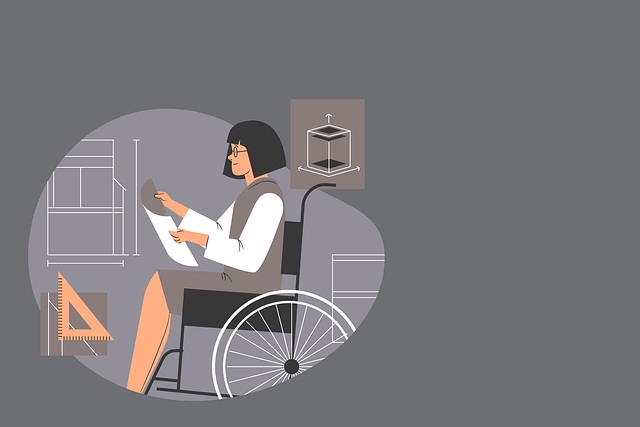By Aravindan Srinivasan and Akshat Garg, AVPN
Tomorrow is Universal Health Coverage Day. ‘Health for all’ is a cherished global vision that was first formalized in 1978 through the Alma Ata Declaration. Under the current Sustainable Development Goals (SDGs) 2030, Goal 3 of “healthy lives and promotion of wellbeing for all at all ages”, forms the backbone of a holistic concept of wellbeing and continuous care.
The National Health Policy (NHP) 2017 of India, formed the guiding document for India to fulfill its commitment towards the SDG3, and resulted in the launch of the Ayushman Bharat Programme in 2018. The programme institutionalized the idea of Comprehensive Primary Health Care (CPHC) in India through the development of Ayushman Bharat – Health and Wellness Centers (AB-HWCs). Under the programme, 1,50,000 Health & Wellness Centres (HWCs) will be created to deliver Comprehensive Primary Health Care, that is universal and free to users, with a focus on wellness and the delivery of an expanded range of services closer to the community.
Overview of National Health Mission (NHM) infrastructure in India
Under the NHM, the village level is equipped with Auxiliary Nursing Midwifery (ANM) and Anganwadi workers. The Sub Centres (SC) that usually serve 3000-5000 patients form the first level of medical access in India. The Primary Health Centres (PHC) form the next level, usually covering a population of 30,000 in rural areas. These are followed by Block PHC and Community Health Centres (CHC). Thus, PHC usually forms the first point of contact between the community and a medical officer and administrative hub for sub health centers.
While facilities and structure vary across states, often access to advanced care is available only at District and State hospital levels. Now, under the Ayushman Bharat Initiative, the existing Sub Centres and Primary Health Centres will be transformed into HWC and form the base pillar of the Ayushman Bharat CPHC Network.
Overview of NHM in Meghalaya
Meghalaya has a comprehensive health policy that suggests a three-pronged approach to healthcare in the state. Yet the state faces challenges with inadequate infrastructure at many PHCs. Further, poor network connectivity hampers access to Telemedicine services.
The state aims to impact 1.3 million beneficiaries through 116 (target for 2019-20) Ayushman Bharat-Health and Wellness Centers (AB-HWCs). The model focuses on Preventive Care, Curative Care, and Enabling Care. 40 of these centres have been made operational. Further, the number of services, essential medicines and diagnostic services, have been increased. Keeping an eye on capacity and sustainability, nearly 1700 ASHA workers, 240 multi-purpose workers and 160 medical officers have been trained.
Meghalaya’s model of success
One of the critical factors in this rapid scale and improvement is the government’s openness towards public-private partnerships. The state government, through the NISHTHA Programme, partnered with Jhpiego, USAID, for improving access to services at the PHC level. While CPHC guidelines provided a broad range of diagnostic tests at the PHC itself, budget constraints greatly limited their functions and services. Only 8 to 9 tests were offered, which too were limited as all centers could not work 24X7.
To resolve these challenges, a partnership between the State Leadership and Krsnaa Diagnostics was formed. Over the partnership, with administrative and community support, PHCs under the project now offer as many as 52 diagnostic tests, round the clock, conducted at the PHC level itself. The initiative is both financially viable and has made a giant leap towards the goal of comprehensive care. Further this has helped ease pressure on district and state hub hospitals, creating a positive domino effect.
Potential for private participation
Within Meghalaya, the footfall in the 40 operational AB-HWCs is has substantially increased. Further, under the wellness concept, more areas of care have opened up. AB-HWCs in Meghalaya, for instance, have conducted 574 Yoga sessions and screened and treated thousands of patients for hypertension, diabetes, breast, cervical and oral cancer at the PHC level itself. With government schemes to bring more citizens under health insurance and easier access to, diagnostic and medicine, without arduous travels, healthcare services in Meghalaya in particular, and India in general are expected to see exponential growth and partnership going forward.
Possible areas of partnership
Under NHM guidelines, every CPHC Centre must provide 12 essential services. These specialized services thus require infrastructure development, equipment and skilling and capacity building. Given the remote nature of PHCs, there is also an opportunity for provision of maintenance of equipment and other auxiliary services, such as sanitation and data analysis to develop health insights.
The community centric approach fosters a trust-based model between community, private capital and administration easing implementation challenges. Our experience in Meghalaya shows that a PHC/ Subcentre can be empowered usually under a budget of 4 million INR. Almost 60% of the fund helps build infrastructure, while the rest is dedicated to staff capacity and patient support. The corporate partner may also choose to support specific aspects of the PHC – such as diagnostic services, capacity building, telemedicine etc.
Conclusion
The Public-private-civil society partnership not only creates better services for citizens, and sustainable business models, but also creates examples of excellence. These can have a catalytic impact on the entire sector. Meghalaya, for instance, now has an annual “Best CPHC award” allowing for a healthy competition among the 110 functioning PHCs in the state. It is with this lens of compounding impact that each HWC intervention must be looked at – micro-low risk experiments, each with the capacity to revolutionize healthcare access in India.
Views of the author are personal and do not necessarily represent the website’s views.

Aravindan Srinivasan is the Product Director for South Asia at AVPN. With over 600 members covering 33 countries, AVPN is Asia’s largest social investor network moving capital towards impact in Asia. Aravind has 14 years of experience in organizational development and leadership, of which he spent the last 6 years leading the capacity building team, providing strategic support to non-profit leaders and managing advisory engagements to help philanthropists and foundations channel their giving to India.

Akshat Garg is a Volunteer Associate with AVPN’s Knowledge & Insights Team. Akshat is currently pursuing his Master’s in Public Policy with Lee Kuan Yew School of Public Policy as a Li Ka Shin Scholar. He is currently working with AVPN to better understand the opportunities for social capital in India and help forge Public-Private Partnerships.
Thank you for reading the column. Please drop a line and help us do better.
Subscribe


